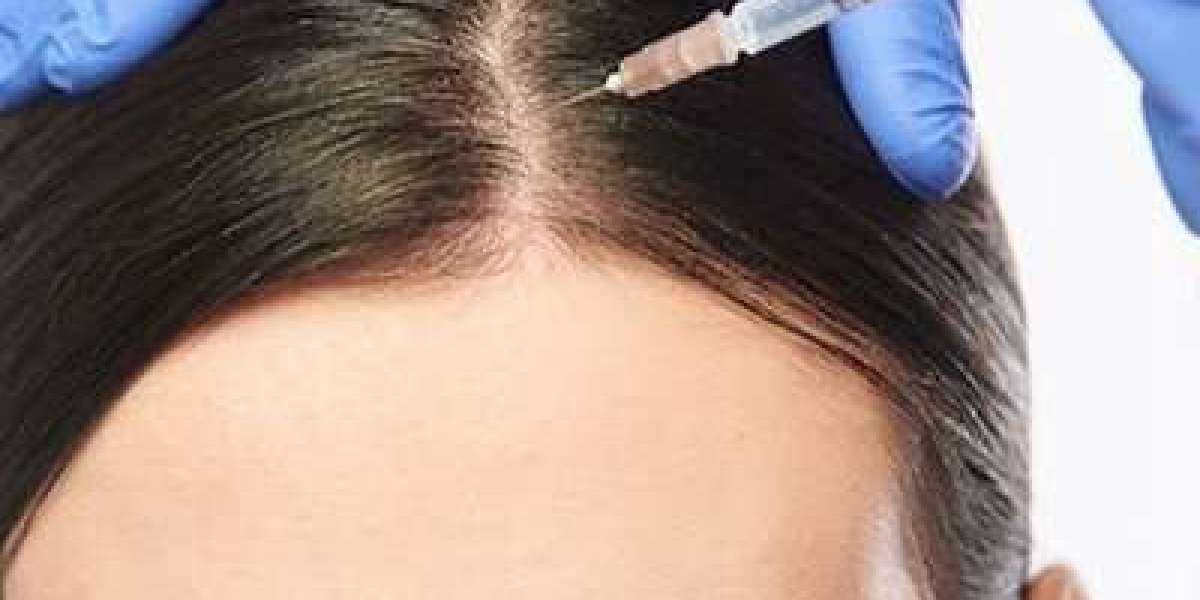Hair loss is a common concern affecting millions of people worldwide. From pattern baldness to thinning hair, finding effective solutions can be a challenge. One treatment gaining attention is Platelet-Rich Plasma (PRP) therapy, a minimally invasive procedure that uses your body’s own blood components to stimulate hair growth. But is PRP treatment really good for hair? In this blog, we'll explore how PRP works, its benefits, and whether it’s a viable solution for hair restoration.
Understanding PRP Therapy:
PRP therapy in Islamabad harnesses the power of the body's natural healing abilities. The procedure begins by drawing a small amount of the patient’s blood, which is then spun in a centrifuge to separate the platelet-rich plasma from the other blood components. This concentrated plasma, which is rich in growth factors, is injected directly into areas of the scalp experiencing hair loss.
Growth factors are proteins that stimulate cell regeneration and tissue repair. When injected into the scalp, these growth factors activate dormant hair follicles, improve blood circulation, and encourage the growth of new, stronger hair.
How Does PRP Benefit Hair Growth?
PRP therapy offers multiple benefits for hair growth and scalp health. These include:
- Stimulates Natural Hair Growth: PRP is designed to stimulate the hair follicles and revitalize them, which can lead to the regrowth of hair that has been thinning or shedding.
- Reduces Hair Shedding: In addition to promoting growth, PRP can reduce excessive hair shedding, a key concern for many individuals suffering from hair thinning or pattern baldness.
- Improves Hair Thickness and Density: PRP encourages hair to grow in thicker and healthier, which can lead to an overall improvement in hair density and scalp coverage.
- Boosts Scalp Health: PRP’s growth factors not only benefit hair follicles but also help improve overall scalp health, addressing conditions that may contribute to hair loss, such as inflammation or poor blood circulation.
Is PRP Effective for All Types of Hair Loss?
While PRP therapy has proven to be effective for many individuals, its success depends on the type and stage of hair loss. Here’s how PRP works for different conditions:
Androgenetic Alopecia (Pattern Baldness): PRP has shown the most promising results for individuals suffering from androgenetic alopecia, the most common form of hair loss. It helps to slow down hair loss, strengthen existing hair, and promote the regrowth of dormant hair follicles.
Telogen Effluvium: This condition, often triggered by stress, pregnancy, or medical conditions, results in temporary hair shedding. PRP can help accelerate the recovery process by revitalizing the hair follicles and improving hair growth.
Alopecia Areata: An autoimmune condition causing patchy hair loss, alopecia areata can also benefit from PRP, though results may vary from patient to patient.
It’s important to note that PRP is most effective for individuals who are in the early stages of hair loss. If the hair follicles have been inactive for an extended period or the scalp is fully bald, the success rate of PRP may be limited.
PRP Treatment Process and Frequency:
A typical PRP hair treatment regimen involves multiple sessions. The number of sessions varies based on the individual's needs and the extent of their hair loss, but most patients require around 3 to 4 treatments spaced about 4 to 6 weeks apart. After the initial course of treatments, maintenance sessions are recommended every 4 to 6 months to sustain the results.
Since PRP is a non-invasive procedure, there is minimal downtime. Patients can return to their regular activities immediately after each session, though there might be minor discomfort, redness, or swelling at the injection sites for a few days.
Are There Any Risks or Side Effects?
One of the major benefits of PRP therapy is its safety profile. Because the treatment uses the patient's own blood, there is minimal risk of allergic reactions or complications. Common side effects include mild swelling, tenderness, or redness at the injection site, which typically resolves within a few days.
However, PRP may not be suitable for individuals with certain medical conditions, such as blood disorders, or those on specific medications, including blood thinners. It's important to consult with a qualified healthcare provider to ensure PRP is the right treatment for your hair loss.
How Long Does it Take to See Results?
Patience is key when undergoing PRP therapy for hair loss. Since PRP works by stimulating natural hair growth, the results are gradual. Most patients begin to notice improvements in hair texture, thickness, and reduced hair shedding after 3 to 6 months. Full results may take up to 12 months to become visible, depending on the individual's hair growth cycle.
Is PRP the Right Hair Loss Solution for You?
PRP therapy can be an excellent option for individuals looking for a natural, minimally invasive treatment for hair loss. However, it’s important to have realistic expectations. While PRP can slow down hair loss, improve hair thickness, and even stimulate regrowth, it’s not a magic solution. It works best when combined with other hair restoration treatments such as medications like minoxidil or hair transplants for more advanced cases of hair loss.
Conclusion: Is PRP Good for Hair?
PRP is an innovative and promising treatment for hair loss, offering a natural way to promote hair regrowth and improve hair density. By using your body’s own growth factors to revitalize hair follicles, PRP can provide noticeable improvements in hair quality, thickness, and scalp health. However, the success of PRP therapy varies depending on the individual and the extent of hair loss.
If you're considering PRP treatment, consult with a hair restoration specialist to determine if you're a good candidate for this therapy and develop a personalized treatment plan. For many individuals, PRP offers a safe and effective solution for revitalizing hair growth and restoring confidence.
For more information visit Dynamic Clinic PK








